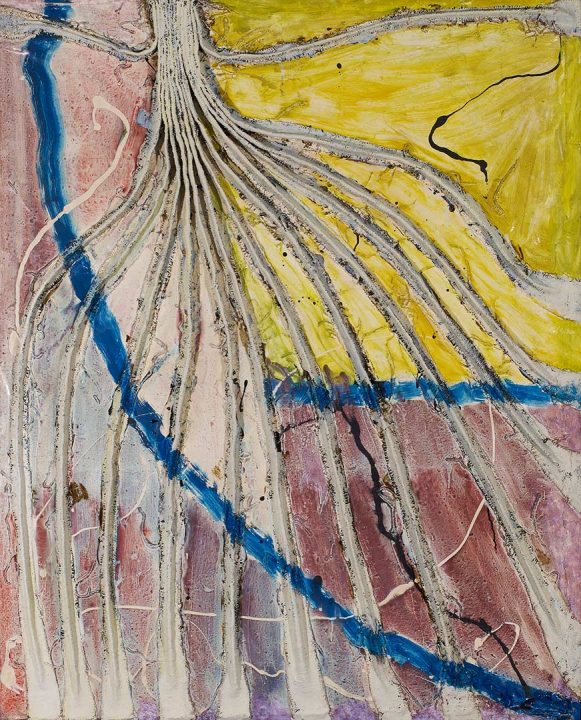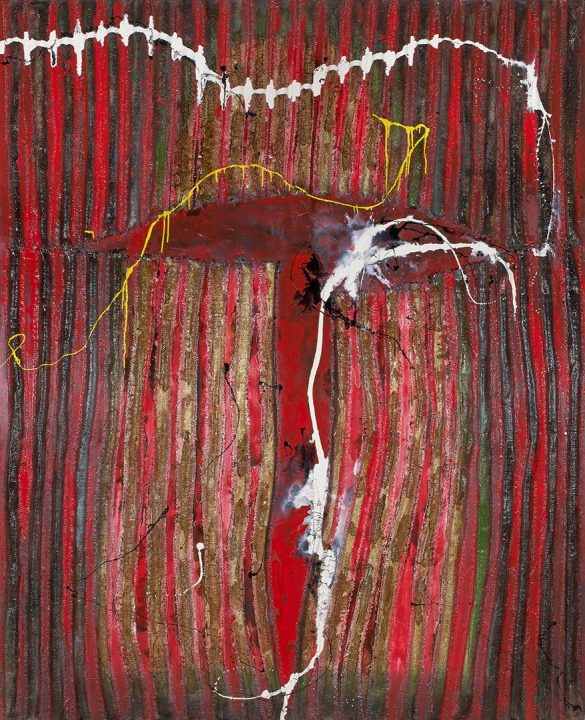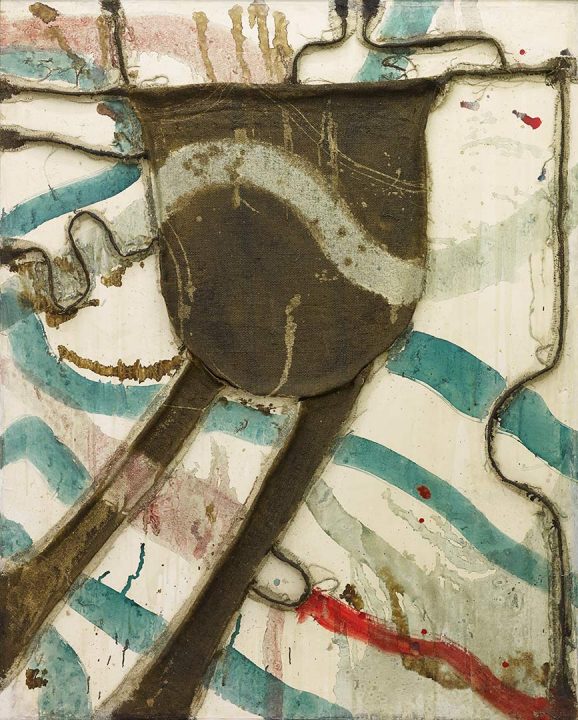1936 –
Maekawa uses burlap as a main material on his creation throughout his career: burlap becomes almost a synonym of the artist to the extent that it comes first in our mind whenever referring to Tsuyoshi Maekawa. Before Maekawa’s appearance, there are a few artists who also use burlaps, such as Joan Miró and Alberto Burri in the history of art, but Maekawa is the first one who shows his lifelong persistence in its materiality. Not only attaching and sewing burlaps with three-dimensional expression on canvas, Maekawa always gives a coloring with oil on the surface; it is a testimony of the artist’s stir persistence to the tableaux regardless of his pursuit for undulating effect. Alongside with Shuji Mukai and Takesada Matsutani, Maekawa is the representative figure from Gutai’s second generation. After dissolution of Gutai, Maekawa never stops to be full of creative activities including many exhibitions in overseas.
Collection:
The National Museum of Art (Osaka), Osaka City Museum of Fine Arts, Museum of Contemporary Art Tokyo, Tate Modern (London), etc.
Selected Artworks
 |
 |
 |
| Work 130902 | Untitled | Work (Nanameni) |